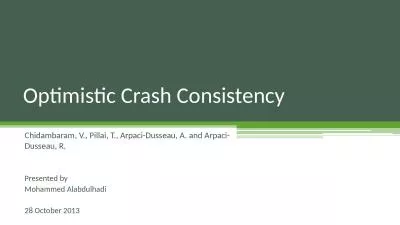PPT-Analysis and Evolution of Journaling File Systems
Author : yoshiko-marsland | Published Date : 2016-11-10
By Vijayan Prabhakaran Andrea and Remzi ArpaiDusseau Presented by Andrew Quinn EECS 582 W16 1 Outline File System Background Description of novel tools Analysis
Presentation Embed Code
Download Presentation
Download Presentation The PPT/PDF document "Analysis and Evolution of Journaling Fil..." is the property of its rightful owner. Permission is granted to download and print the materials on this website for personal, non-commercial use only, and to display it on your personal computer provided you do not modify the materials and that you retain all copyright notices contained in the materials. By downloading content from our website, you accept the terms of this agreement.
Analysis and Evolution of Journaling File Systems: Transcript
Download Rules Of Document
"Analysis and Evolution of Journaling File Systems"The content belongs to its owner. You may download and print it for personal use, without modification, and keep all copyright notices. By downloading, you agree to these terms.
Related Documents

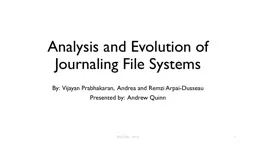


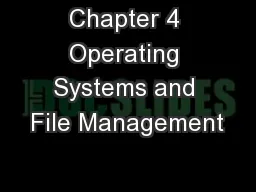
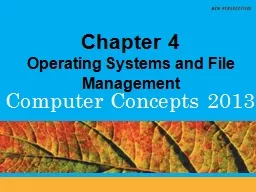
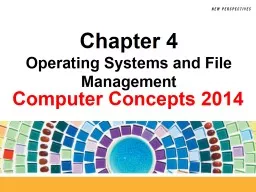
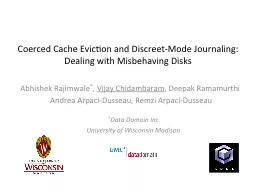
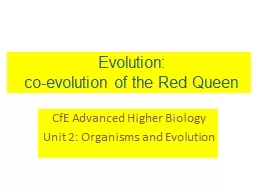

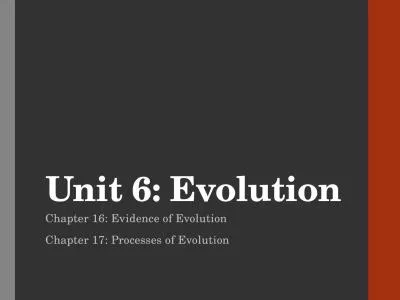
![[READ] FCWC Conference Notes: Journaling Planning Notebook: Journaling Scribbles Collection](https://thumbs.docslides.com/1005225/read-fcwc-conference-notes-journaling-planning-notebook-journaling-scribbles-collection-edition-1-bw-interior.jpg)

